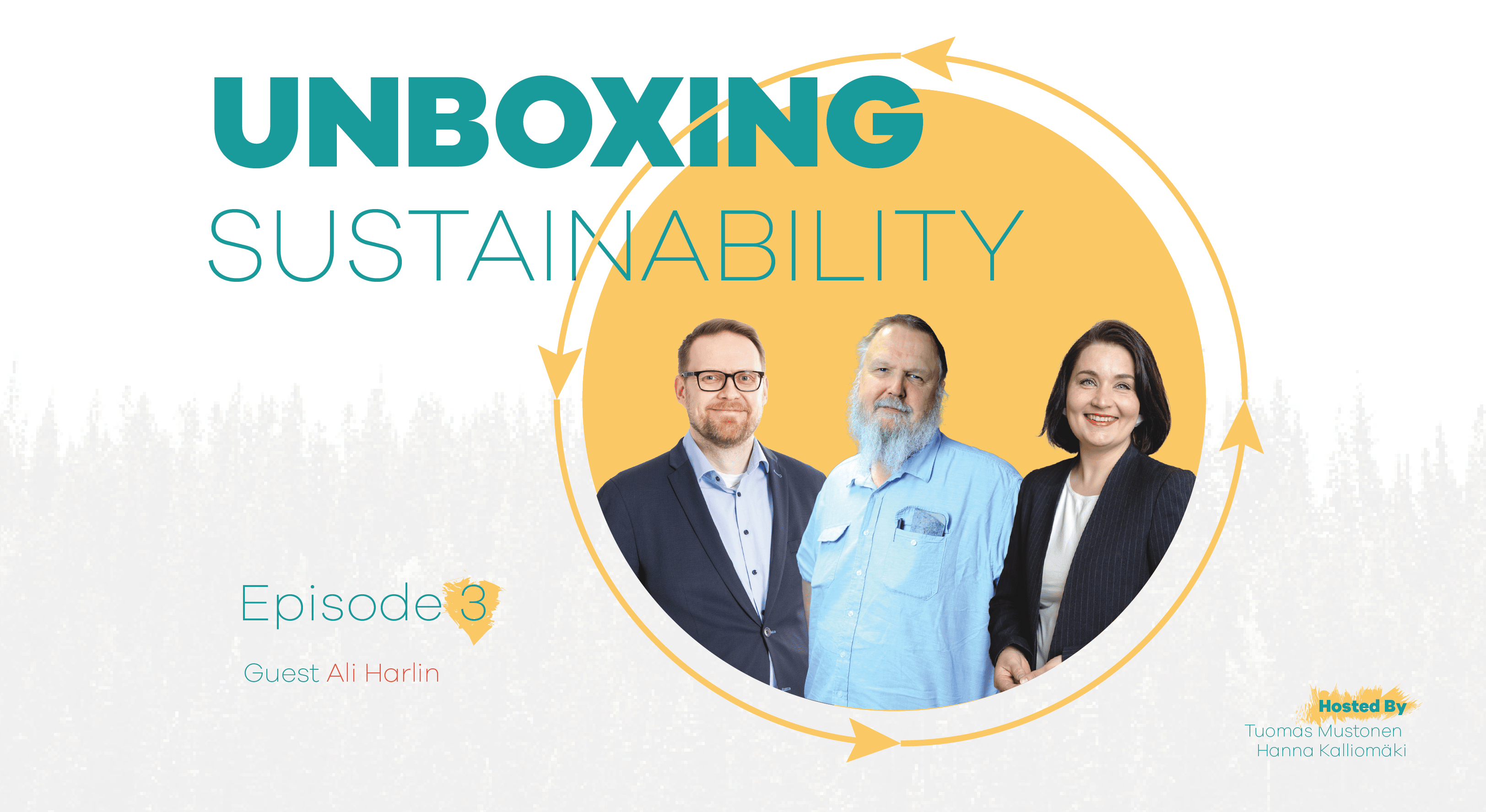Unboxing Sustainability Podcast: The fascinating future of bioproducts: the current crisis may hold the key to sustainable materials

If the preview does not load, you can find the episode here!
Can the current crisis bring hope for the future? Will the age of plastic ever disappear? Tune in as Paptic’s Hanna Kalliomäki & Tuomas Mustonen unravel the many layers of packaging use with their guest, Professor Ali Harlin.
Together they discuss why bioproducts are needed to replace fossil fuels, the significance of recyclability, reusability, and biodegradability, and how research results can be applied to global markets to bring about successful innovations.
Our world has become increasingly aware of the current issues surrounding single-use plastics and plastic waste in our environment. This episode describes the phenomena we are wrapped up in, how we can learn about the past, and how to predict the fascinating future of bioproducts.
REPLACING FOSSIL CARBONS WITH BIOPRODUCTS
Bioproducts have been used throughout our history, although during World War II, oil became the dominant resource. Many changes, including the transition from bioproducts to fossil fuels have happened in the past, and we can be sure that changes will happen in the future as well. The looming problem today is the use of fossil fuels and the climate issues of our time. We need to find solutions that will replace non-renewables.
Replacing fossil fuels is dependent on limiting their use, switching to sustainable packaging, and using fibre-based products. Plastic alternatives are changing drastically, and with today’s plastic problem, many consumers may not be able to differentiate between the various materials and may not know how to make informed decisions. Replacing plastics with bioproducts stems from the needs of consumers, and packaging developments depend on the customer experience.
REUSABILITY OR RECYCLABILITY?
The question remains of which choices are better for our planet. Reusability is the best option, but it is not feasible in all cases. Reusability depends on a product’s performance and the quality of its materials. If the product is to be reused, it must perform well. For example, if reusable bags don’t perform well, consumers will not use them. The better the performance, the better the sustainability. This is not possible for all products, so then we must look at recyclability.
RECYCLABILITY OVER BIODEGRADABILITY
It is difficult to measure the lifecycle of a product since it is impossible to freeze time. Keeping material in circulation is not only about a product’s lifetime. Understanding a product’s total material efficiency is more important than its lifetime. A product could have a short, but efficient lifetime and save a significant amount of its own weight in carbon emissions. Recycling takes priority over biodegradability if a system leaks. 70-80% of fibre materials are recyclable and biodegradable in nature. Recyclability then becomes the most viable for sustainability. Because of this, keeping people motivated to recycle is important and effective.
USING RESEARCH TO BUILD A BRIGHTER FUTURE
As we can see from history, great things emerge from crises and digitalization. Thanks to the media, consumers are today more aware of the impacts on our planet, and there is a strong drive for change. We all share a role in creating change, and moving towards the use of renewables, recyclables, sustainable packaging, and sustainable materials is a combined initiative.
The nano-initiative has created a great leap in material science research. Nano-cellulose uses fewer resources and offers more properties and utilisation possibilities. In the future, we may still use packaging materials from years past, but there will be an increasing growth in the use of environmentally friendly packaging.
The future depends on consumer habits and the use of packaging. With population growth, there is an increasing demand for packaging materials. Ensuring availability is important from a business perspective. Production of packaging materials must be secured, and their market size must be understood. Meeting this demand is essential, but requires sustainable solutions.
Building a better future requires us to follow the results of scientific research. We need to find solutions to the microplastics and waste issues our planet faces. This must also involve legislation, and we all need to work together. Together we can make the change.
Find all our podcast episodes here: Podcast
